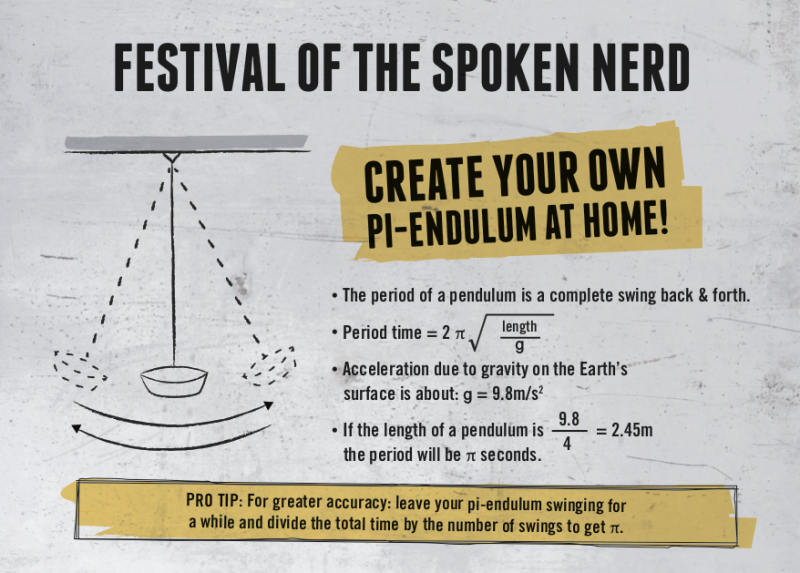Today’s contribution is from friend of the site, Festival of the Spoken Nerd’s Matt Parker, who’s found a way to approximate π using a mince pie (or any type of pie, or indeed any small object with non-zero mass, but the mince pie is the most festive option). The trick is to use it as the weight on the end of a 2.45m-long pendulum, and time the swings.
The pendulum is part of the latest Spoken Nerd show, You Can’t Polish a Nerd (which we’ve reviewed here recently), and this clip shows Matt’s preparations to do the approximation live on stage:
https://twitter.com/FOTSN/status/1062402096572575744
The diagram below outlines how it’s done:
- The period of a pendulum is a complete swing back & forth.
- Period time = $2\pi \sqrt{\frac{\textrm{length}}{g}}$
- Acceleration due to gravity on the Earth’s surface is about: $g = 9.8m/s^2$
- If the length of a pendulum is $\frac{9.8}{4} = 2.45m$ the period will be $\pi$ seconds.
- PRO TIP: For greater accuracy: leave your pi-endulum swinging for a while and divide the total time by the number of swings to get $\pi$.
Share your own photos, videos and approximations to mince π on Twitter, and give @FOTSN a mention so they can see just what they’ve started. Visit the FOTSN shop to get your hands on the show in various formats (great Christmas presents!).
This post is part of the Aperiodical’s 2018 Aperiodvent Calendar.

